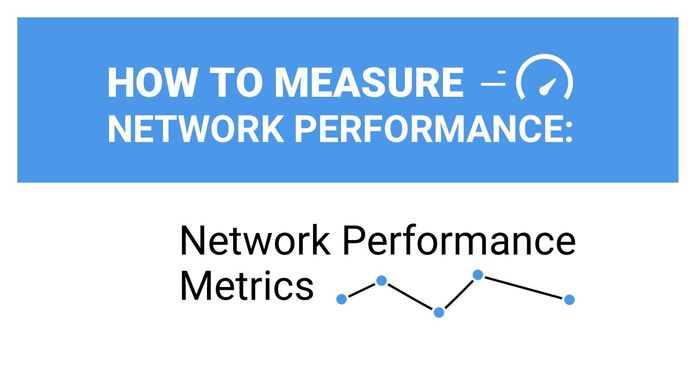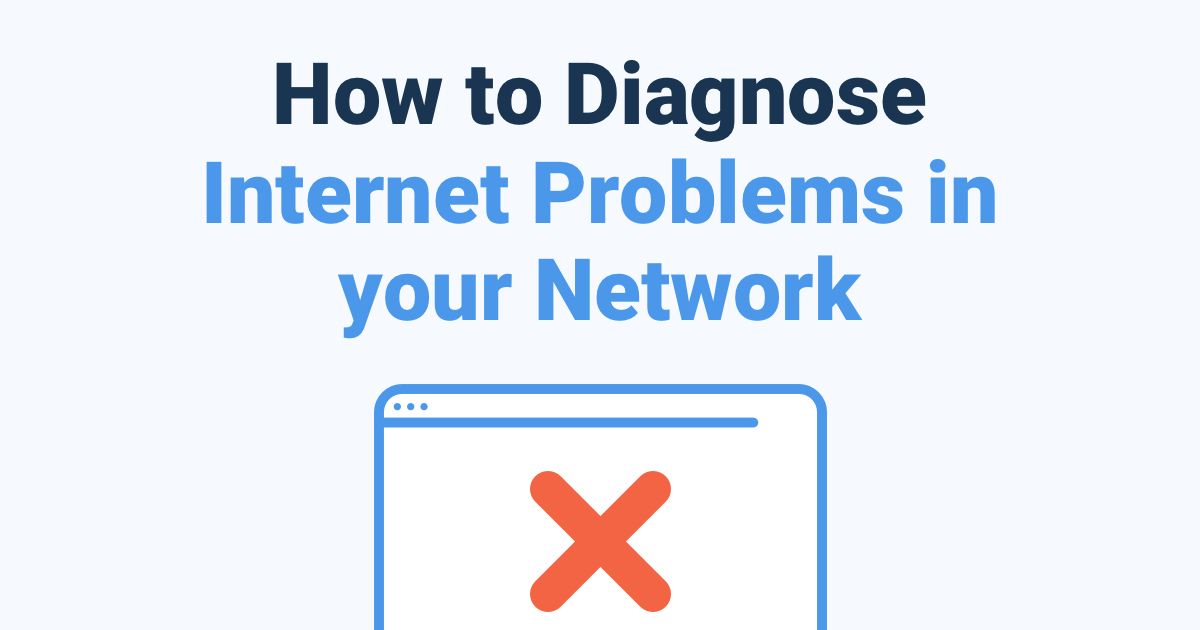Table of Contents
Table of Contents
Whether you're streaming a movie, conducting a crucial Zoom meeting, or managing a data-intensive enterprise, a reliable Internet connection is non-negotiable. The Internet is expected to be fast, always available, and capable of handling your specific needs. But how can you ensure that your Internet service provider (ISP) is meeting these expectations? The answer lies in Internet Service Level Agreements (or Internet SLAs).
Internet Service Level Agreements are the contractual promises between you and your ISP, detailing the quality and reliability of the Internet service you've subscribed to. Yet, understanding and monitoring these SLAs can be a challenging endeavor, especially for non-technical users. That's where our guide comes in.
In this blog post, we'll take you through the intricacies of monitoring Internet Service Level Agreements. Whether you're a business owner striving to ensure uninterrupted operations or a homeowner seeking a smooth online experience, the information and techniques we'll share here are invaluable. We'll demystify the concept of SLAs, discuss their importance, and equip you with practical tools and strategies to ensure your ISP lives up to its promises.
Let's get started on your quest to become an empowered, tech-savvy Internet consumer!
From streaming high-definition content and conducting critical video conferences to managing vast networks and cloud-based operations, a dependable Internet connection is no longer a luxury – it's a necessity. We depend on the Internet to work, learn, connect, and play.
Service Level Agreements, or SLAs, are the contractual agreements between you and your Internet Service Provider (ISP) that outline the terms and conditions of your Internet service. These agreements define the quality, reliability, and performance standards that your ISP promises to deliver.
SLAs typically cover a range of parameters, including speed, uptime, latency, and more. They serve as a benchmark against which you can measure the performance of your Internet connection.
Understanding the significance of Internet SLAs is crucial because it empowers you as a consumer. By having a clear grasp of what your ISP is contractually obligated to provide, you can set realistic expectations for your Internet service. This knowledge allows you to make informed decisions when selecting an ISP and, more importantly, ensures that you get the service quality you're paying for. SLAs provide a framework for accountability and transparency in the digital age.
Knowing what's promised in your SLA is only the first step. The second is ensuring that you’re delivered the level of performance that you’re promised. The Internet isn’t static; it's a dynamic ecosystem subject to fluctuations and technical challenges. Real-world performance can deviate from the ideal, and that's where monitoring comes into play.
Monitoring your Internet SLA is essential for several reasons. It allows you to:
- Verify Compliance: Regular monitoring ensures that your ISP is meeting its contractual obligations. If there are discrepancies, you can address them promptly.
- Optimize Performance: Monitoring helps identify performance bottlenecks and issues, enabling you to take action to improve your Internet experience.
- Prevent Downtime: By tracking uptime and reliability, you can minimize downtime and its associated costs, whether you're a business owner or a homeowner.
- Hold ISPs Accountable: With concrete data from your monitoring efforts, you can hold your ISP accountable for SLA violations and seek resolution or compensation when necessary.
- Stay Informed: Monitoring keeps you informed about the state of your Internet connection, empowering you to make informed decisions about your Internet service.
In the chapters that follow, we'll delve into the world of Internet SLAs, exploring key metrics, monitoring techniques, and best practices to ensure that your Internet service lives up to its promises. We'll provide you with the knowledge and tools you need to become a savvy and empowered Internet user in an era where staying connected is paramount.
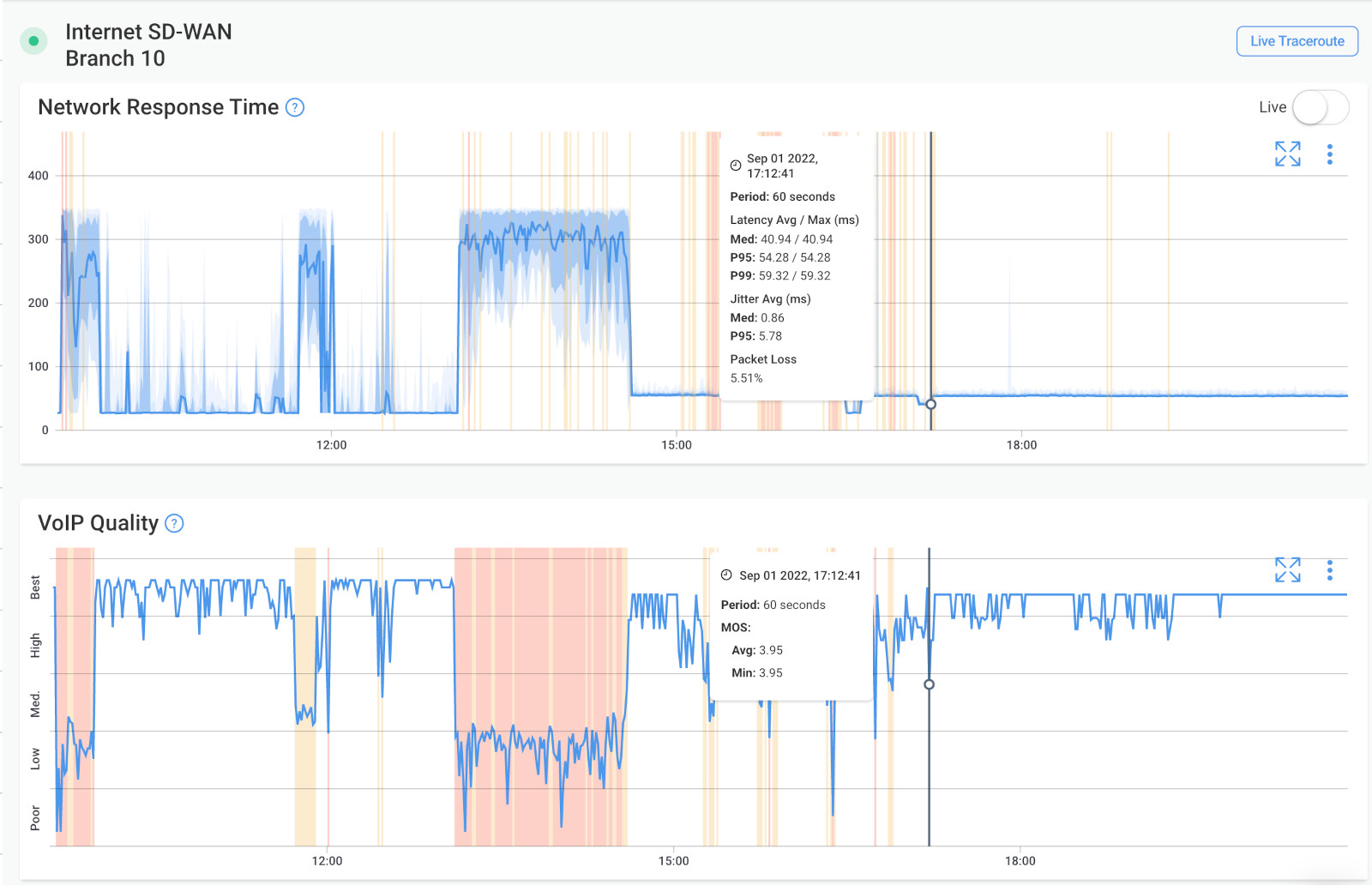

Service Level Agreements, commonly known as SLAs, are the foundational documents that govern the relationship between you, the consumer, and your Internet Service Provider (ISP).
At their core, SLAs are legal contracts that specify the level of service you can expect to receive. These agreements outline the terms and conditions of your Internet service, including the quality, reliability, and performance standards that your ISP promises to uphold.
SLAs typically cover a variety of aspects of your Internet connection, such as:
- Speed: This aspect defines the promised bandwidth, indicating the maximum data transfer rate you can expect. It's usually measured in megabits per second (Mbps) or gigabits per second (Gbps).
- Latency: Latency refers to the delay in the transmission of data packets between your device and a remote server. Lower latency values lead to more responsive and real-time interactions, making it critical for applications like online gaming and video conferencing.
- Uptime: Uptime is a measure of the percentage of time your Internet connection should be available and operational. For businesses, maximizing uptime is crucial to avoid disruptions and financial losses.
- Packet Loss: Packet loss indicates the percentage of data packets lost during transmission. High packet loss can result in degraded quality, affecting activities like VoIP calls and streaming.
- Guarantees: Some SLAs include guarantees related to customer support, response times for issue resolution, and compensation in case of service disruptions.
Internet Service Providers may offer different types of SLAs, each catering to specific needs and preferences:
- Standard SLA: This is the most common type and provides a baseline level of service quality, typically covering speed, uptime, and some basic guarantees. It's suitable for residential users and small businesses with standard requirements.
- Business SLA: Tailored for businesses, this type of SLA often includes more stringent requirements for uptime, support response times, and compensation in the event of service interruptions. It's ideal for businesses that heavily rely on uninterrupted connectivity.
- Custom SLA: Some ISPs offer the flexibility to create custom SLAs based on individual requirements. This is beneficial for enterprises with unique needs or specific industry compliance standards.
SLAs are far from being mere legal jargon or paperwork; they hold significant importance for both consumers and service providers. Here's why SLAs matter:
- Clear Expectations: SLAs define the performance standards and guarantees in clear, quantifiable terms. This clarity helps you set realistic expectations and assess whether your ISP is meeting them.
- Accountability: When you encounter service issues or discrepancies, SLAs provide a basis for holding your ISP accountable. They establish a framework for addressing and resolving problems promptly.
- Quality Assurance: For businesses, adhering to SLAs is vital to ensure consistent quality of service, which, in turn, contributes to customer satisfaction and trust.
- Cost Control: By understanding what's covered in your SLA, you can make informed decisions about your Internet service, potentially saving costs while still meeting your requirements.
Demystifying Internet SLAs is the first step in becoming a knowledgeable and empowered consumer. In the chapters ahead, we'll explore the practical aspects of monitoring SLAs and ensuring that your Internet service lives up to the promises outlined in your agreement.
Learn how to troubleshoot intermittent Internet connection issues with Network Monitoring. Find & fix the cause of intermittent Internet issues.
Learn more

Internet SLAs offer numerous advantages for customers:
SLAs provide a clear and enforceable commitment from the service provider, assuring customers of a certain level of service quality. In case of SLA breaches or underperformance, customers have a basis for holding the service provider accountable and seeking compensation.
SLAs help customers ensure a consistent and high-quality Internet experience, which is especially important for businesses and remote work. They also make the terms of service explicit and transparent, ensuring that both parties understand their roles and responsibilities. Some SLAs can also be customized to meet specific customer needs and performance expectations.
Finally, in case of disputes or disagreements, SLAs provide a framework for resolving conflicts between customers and service providers.
Internet Service Providers (ISPs) also benefit from offering SLAs:
ISPs with well-structured and reliable SLAs can use them as a selling point to attract customers, especially in the business sector. With current customers, they help maintain a satisfied customer base, reducing churn and fostering long-term relationships. By clearly defining service parameters, ISPs can also manage expectations and reduce the risk of customer disputes or legal actions.
SLAs encourage ISPs to maintain and improve network infrastructure and service quality to meet the agreed-upon standards. They offer ISPs a way to measure and improve their own performance, enhancing their reputation in the industry.
Offering premium SLAs can create new revenue streams for ISPs, as customers may be willing to pay more for higher service guarantees.
Monitoring your Internet SLA is all about paying attention to the details and keeping an eye on the data.
For service providers, it's all about living up to the promises made in that SLA and making sure your users get what they're paying for.
So, how can you make this happen? By using a reliable, around-the-clock Network Monitoring tool like Obkio’s Network Monitoring tool. It's your secret weapon to keep things running smoothly.

Obkio’s end-to-end Network Monitoring tool uses distributed Monitoring Agents to monitor network and Internet performance in all key network locations. The Agents continuously exchange synthetic traffic to measure the performance of:
- Your local network (LAN monitoring, VPN) and third-party networks (WAN performance, ISP, and Internet Peering)
- Applications like VoIP (or VoIP PBX), Unified Communications (Zoom and Microsoft Teams)
- Network devices like Firewalls, routers, and switches
- Services like SD-WAN, MPLS, Dual-WAN and SASE
- And, most importantly, the end-user experience
By setting up Obkio across your key network points, you introduce a powerful element of automation into your SLA monitoring process. This means you can continuously and effortlessly keep tabs on your Internet performance without the need for manual intervention.
Having Obkio stationed at various network locations empowers you to gather a wealth of data about your Internet connection. It monitors essential metrics like speed, latency, packet loss, and uptime, providing a comprehensive view of your Internet's health. This data is invaluable for pinpointing issues, diagnosing problems, and tracking your service quality over time.
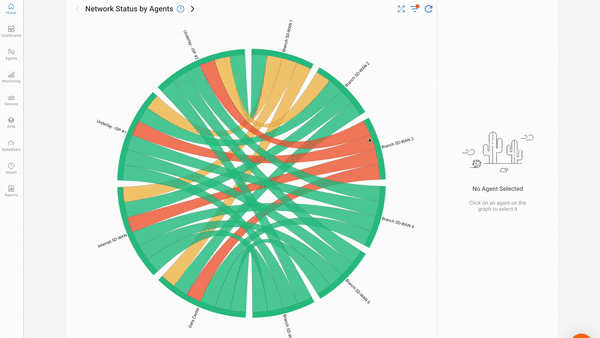
Networks may be complex. But Obkio makes network monitoring easy. Monitor, measure, pinpoint, troubleshoot, and solve network problems.
- 14-day free trial of all premium features
- Deploy in just 10 minutes
- Monitor performance in all key network locations
- Measure real-time network metrics
- Identify and troubleshoot live network problems

When deploying Obkio, it’s important to set up monitoring agents which monitor network performance between you and the Internet so you can monitor your Internet performance and therefore your Internet SLA.
First you need at least 1 Software, Hardware, or Virtual Monitoring Agent to monitor your network performance. These Monitoring Agents can be deployed on your workstation, at your company's head office, branch office, data center etc.
All Monitoring Agent types have the same features, including distributed deployment, synthetic traffic every 500ms, and network metric measurement, and more!
Next, you need 2 Public Monitoring Agents to monitor your Internet performance and diagnose Internet problems.
Public Monitoring Agents are hosted by Obkio and major Service Providers around the world like:
Public Monitoring Agents are hosted by Obkio and major Service Providers around the world like:
- Azure: For Microsoft Teams monitoring and to monitor other apps like Microsoft 365, Dynamics 365 performance and more. Great for general Microsoft network monitoring up the Microsoft Azure cloud.
- AWS (Amazon Web Services): to monitor apps on AWS Cloud or AWS Marketplace, monitor AWS network performance or Zoom performance.
- Google Cloud: to monitor the performance of any Google-hosted apps like Google Meet.

Once all Monitoring Agents are deployed, they will continuously exchange traffic between each other to monitor your Internet performance and identify issues like network congestion, high bandwidth usage, packet loss, network overload and slow Internet or network speeds.
Once you’ve set up your Monitoring Agents, they will start measuring key Internet performance and network metrics like jitter, packet loss, latency, throughput and more. Obkio also measures metrics related to user experience, such as QoS, and VoIP Quality. Monitoring these metrics is key for identifying performance issues, and understanding if your network is operating as it should be.
Obkio monitors performance in real-time, which means you're not left in the dark about the state of your Internet service. It swiftly detects anomalies, slowdowns, or interruptions, allowing you to quickly troubleshoot issues before they disrupt your operations, online experience or user experience.
With Obkio in place, you're no longer reactive when it comes to SLA compliance. Obkio’s tool allows you to proactively address problems, enabling you to maintain a high standard of service. Whether it's a dip in speed, an increase in latency, or any other issue, Obkio helps you tackle these challenges head-on.
Another big part of Internet SLA monitoring and reporting is collecting and analyzing historical data. Obkio measures and collects historical network performance data, so you can analyze, compare, and troubleshoot performance from the past.
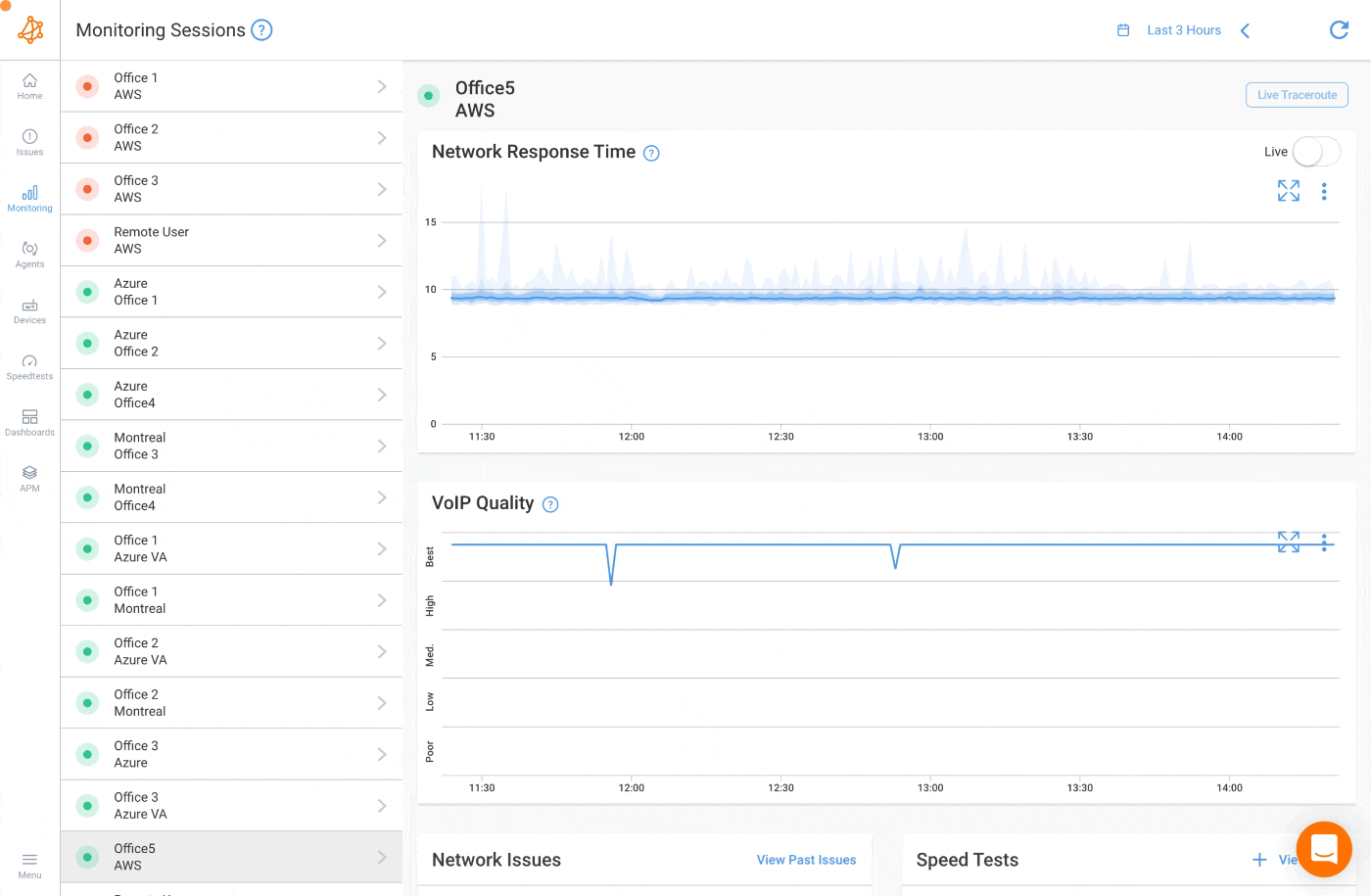
This allows you to:
- Identify if your application or service performance stops meeting Internet SLA requirements
- Pinpoint intermittent performance issues like intermittent Internet connection
- Diagnose performance issues from the past
- Share performance data with your Service Provider over a longer period of time
In the unfortunate event of an SLA violation, having a historical record of data collected by Obkio can serve as compelling evidence. This data can be used to substantiate your claims and negotiate for appropriate compensation or resolution with your service provider.
Deploying a tool like Obkio in your network locations is like having a reliable ally in your corner, continuously working to ensure that your Internet service aligns with the promises in your SLA. It's a game-changer that offers peace of mind and puts you in control of your online experience.
Next, let’s delve into the core metrics that form the foundation of Internet Service Level Agreements (SLAs). These metrics provide a clear and measurable way to evaluate the performance and quality of your Internet service.
As we mentioned earlier, if you’re using a Network Monitoring tool, like Obkio, your software will automatically measure these metrics for you. Obkio continuously measures these performance metrics and allows you to set up alerts to identify issues or understand if the metric measurements are surpassing pre-configured thresholds.
Understanding and monitoring the metrics that you should be monitoring is the key to ensuring that your Internet experience aligns with the promises made in your SLA.
We'll explore the four vital metrics you need to monitor closely:
- Latency: The time it takes for data to travel, and how it impacts real-time applications.
- Bandwidth: The measure of your Internet's speed, critical for various online activities.
- Packet Loss: The indicator of data transmission quality and reliability.
- Uptime: The guarantee of constant Internet connectivity, which is especially crucial for businesses.
In this chapter, we'll demystify each of these metrics, explaining their significance and offering practical insights into how to monitor and interpret them. Armed with this knowledge, you'll be better equipped to assess the quality of your Internet service and take proactive steps to ensure it meets your expectations.
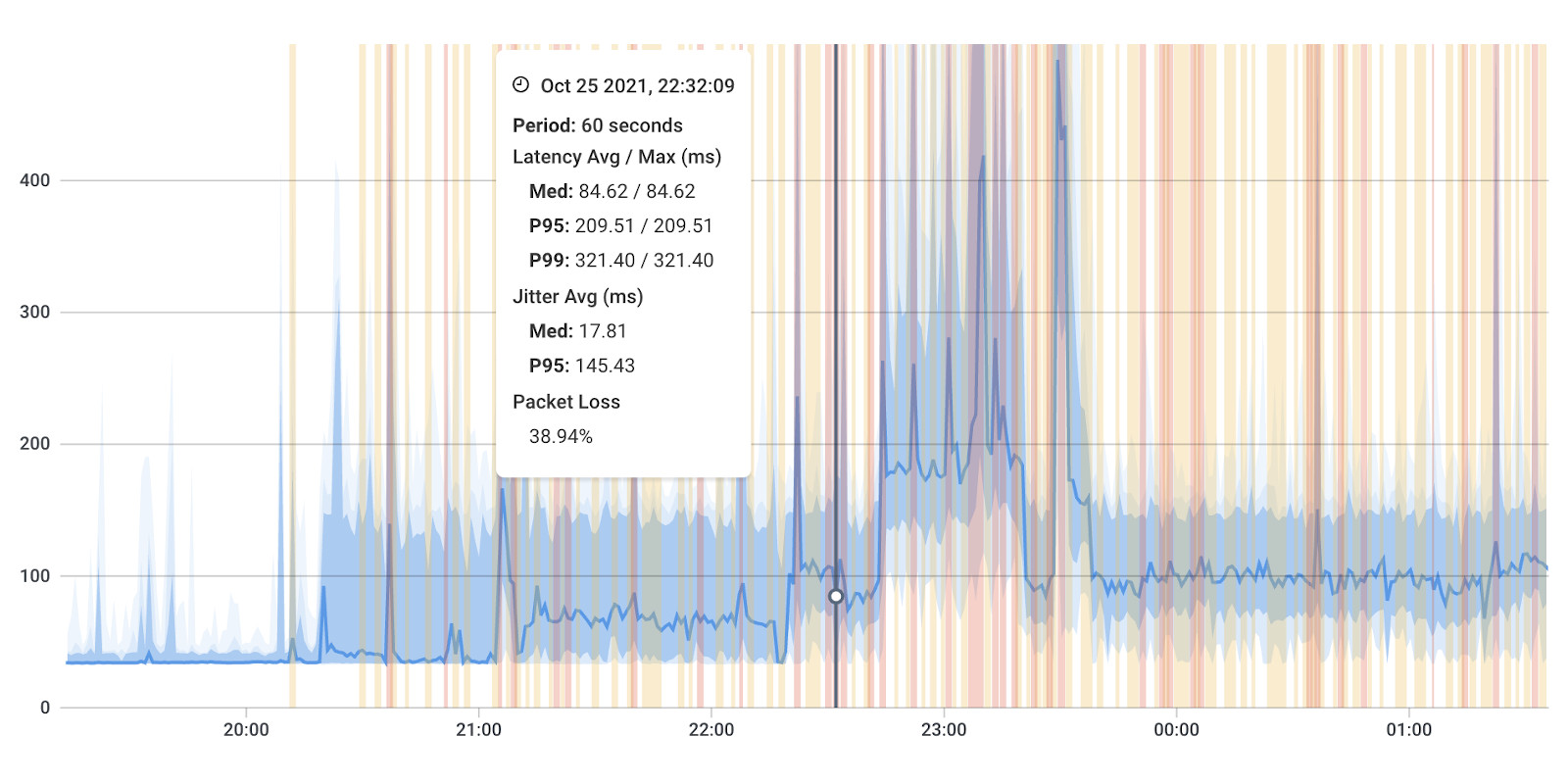
Latency, often referred to as ping, is the time it takes for data to travel from your device to a remote server and back. It's measured in milliseconds (ms) and plays a crucial role in your Internet experience. Lower latency means data travels quickly, resulting in more responsive interactions. In applications like online gaming and video conferencing, low latency is essential for real-time communication. High latency, on the other hand, can lead to delays and lag, negatively impacting the quality of your Internet experience.
Latency can be affected by various factors, including the physical distance between your device and the server, network congestion, and the performance of the Internet infrastructure. Monitoring latency allows you to detect and address issues that may arise, ensuring a smoother online experience.
Bandwidth refers to the maximum data transfer rate your Internet connection can handle. It's typically measured in megabits per second (Mbps) or gigabits per second (Gbps). Bandwidth determines how quickly data can be uploaded or downloaded, making it a fundamental metric in assessing Internet speed.
For activities like streaming high-definition videos, large file downloads, or supporting multiple devices simultaneously, sufficient bandwidth is crucial. Regularly monitoring your bandwidth helps you verify that you're getting the speed you're paying for and allows you to adjust your plan if needed.
Packet loss occurs when data packets sent from your device do not reach their destination. It's measured as a percentage, and minimal or no packet loss is ideal for maintaining data integrity and a seamless online experience. High packet loss can result in retransmissions, causing delays and degrading the quality of services like online gaming, VoIP calls, and video streaming.
Monitoring packet loss helps you identify network issues, such as network congestion or hardware problems, and take steps to rectify them. A low packet loss rate is a good indicator of a reliable Internet connection.
Uptime is the percentage of time your Internet connection is operational and available. It's a critical metric, particularly for businesses and organizations where continuous connectivity is essential. For example, online businesses, remote working, and critical applications all rely on uninterrupted Internet access.
Uptime can be affected by various factors, including network maintenance, hardware failures, and service provider issues. Monitoring uptime allows you to track the reliability of your Internet connection and detect any network outages or disruptions. If your ISP guarantees a specific uptime percentage in your SLA, monitoring helps you ensure that they meet their commitment and enables you to seek compensation for any downtime.
Understanding and regularly monitoring these key metrics empowers you to make informed decisions about your Internet service, hold your ISP accountable for SLA compliance, and take action to maintain a high-quality Internet experience.
Learn how to measure network performance with key network metrics like throughput, latency, packet loss, jitter, packet reordering and more!
Learn more

Now that we have gone over some of the most important metrics, there are a few more we want to discuss. In this section, we'll explore the categories of Internet SLA metrics, from performance and user experience to SLA compliance and security metrics. We'll break down what each category includes and how they help evaluate your Internet service.
By the end, you'll have a comprehensive view of the metrics that empower you to make informed decisions and hold service providers accountable for delivering on their promises.
1. Internet SLA Performance Metrics:
- Latency (Ping): Measures the delay in data transmission.
- Bandwidth: Measures the maximum data transfer rate.
- Packet Loss: Measures the percentage of data packets lost during transmission.
- Uptime: Measures the availability and reliability of the Internet connection.
2. Internet SLA User Experience Metrics:
- Jitter: Internet jitter measures the variation in latency over time.
- Throughput: Measures the actual data transfer rate achieved in real-world scenarios.
- Service Availability: Tracks the availability of essential online services and applications.
- Customer Satisfaction: Collects feedback from users regarding their experience.
3. Internet SLA Compliance Metrics:
- Compliance with Guaranteed SLA Parameters: Ensures that the provider is meeting the performance benchmarks and guarantees outlined in the SLA.
- Incident Response Time: Tracks the time it takes for the provider to respond to and resolve issues.
- Mean Time to Repair (MTTR): Measures the average time it takes to repair service disruptions.
- Outage Duration: Tracks the duration of service outages and their impact.
4. Internet SLA Security Metrics (for Business and Enterprise SLAs):
- Intrusion Detection: Measures the effectiveness of intrusion detection systems.
- Firewall Performance: Evaluates firewall performance and effectiveness.
- Data Privacy and Security: Ensures compliance with data privacy regulations and security standards.
5. Network Capacity Metrics:
- Capacity Utilization: Monitors how much of the available bandwidth is being used to manage network capacity efficiently.
- Network Congestion: Measures the extent of network congestion and its impact on performance.
6. Internet SLA Geographic Metrics (for Multi-Location Networks):
- Geographic Performance: Assesses the performance and connectivity of different network locations.
7. Service Outage Metrics:
- Outage Frequency: Tracks how often service outages occur.
- Outage Duration: Measures the length of service outages and their effect on users and business operations.
These categories encompass various metrics that help assess different aspects of Internet service quality, from technical performance to user satisfaction and adherence to SLA terms. Monitoring a combination of these metrics allows you to gain a holistic view of your Internet service and its compliance with the agreed-upon service levels.
In larger and more intricate networks, the challenge lies in sifting through a myriad of services, applications, and network locations to focus on the data that truly matters for your Internet Service Level Agreement (SLA).
That's where Obkio comes to the rescue. With Obkio, you gain the ability to craft customized, real-time dashboards, offering you a centralized hub where you can visualize all the data relevant to your Internet SLA in one convenient location.
This means you can effortlessly track the performance of your network and services, assessing how they impact one another, as well as the various network locations and users within your network. It's like having a control center at your fingertips, where you can monitor, analyze, and take action based on real-time insights.
Moreover, these dashboards can be equipped with graphs and charts, presenting data from various network locations and applications you are actively monitoring. This level of visibility and control empowers you to make informed decisions and maintain the highest quality of service in line with your Internet SLA.
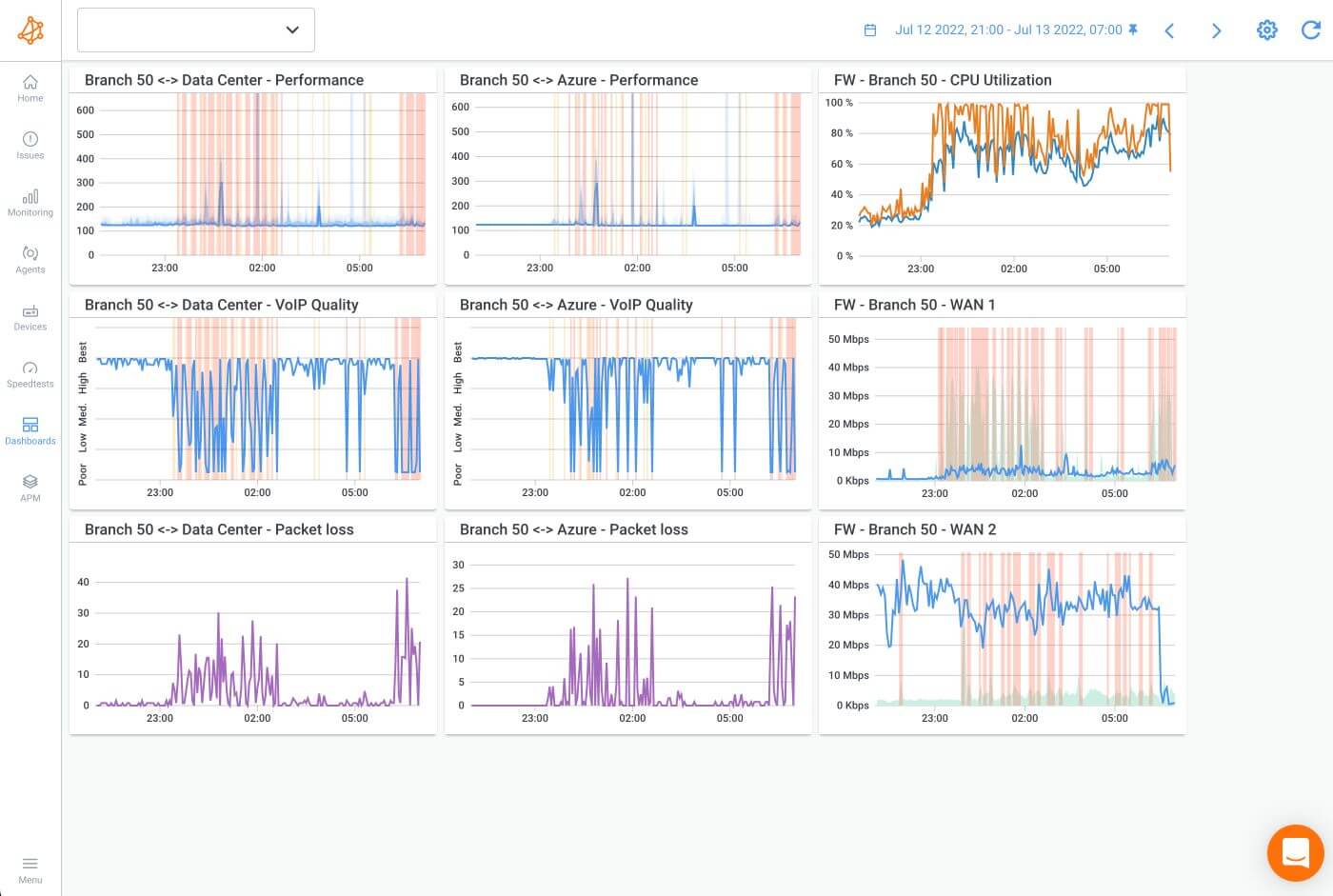

An Internet Service Level Agreement (SLA) dashboard should provide a comprehensive overview of the key performance metrics and data points related to your Internet service. Here are the essential pieces of information you should see on an Internet SLA dashboard:
- Internet Speed: Display the current Internet speed and compare it to the promised speed in your SLA. This could include both download and upload speeds.
- Latency (Ping): Show the current latency or ping times, which indicate the delay in data transmission. Lower latency is generally better, especially for real-time applications.
- Uptime: Track the uptime percentage to ensure that your Internet connection is consistently available. This metric is vital for businesses that require continuous connectivity.
- Packet Loss: Monitor the rate of packet loss in your network. Lower packet loss is essential for maintaining a stable and smooth Internet connection.
- Bandwidth Utilization: Display how much of your available bandwidth is currently being used. This can help in capacity planning and identifying periods of high demand.
- Service Availability: Indicate the availability of essential online services, such as email servers, cloud applications, and VoIP services. Any outages can be alarming for businesses.
- Network Location Performance: If you have multiple network locations or branch offices, include performance data for each location. This can help identify specific areas where issues may be occurring.
- User Experience: Consider including data on how users are experiencing the Internet service. This can be collected through user feedback or performance testing.
- Historical Trends: Provide historical data and trends to track improvements or degradations in service quality over time. This allows you to identify recurring issues.
- Alerts and Notifications: Set up alerts for SLA violations or performance anomalies, so you can take immediate action when issues arise.
- SLA Compliance: Show a summary of whether the service is currently meeting SLA requirements. Highlight any breaches or concerns.
- Geographic Mapping: If your network spans multiple geographic locations, consider using a map to visualize the performance across different regions.
- Key Performance Indicators (KPIs): Include any additional KPIs that are specified in your SLA, such as mean time to repair (MTTR) or network availability targets.
A well-designed Internet SLA dashboard offers real-time visibility into the health and performance of your Internet connection and related services, helping you proactively manage and maintain compliance with your SLA. It empowers you to make informed decisions and quickly address any performance issues that may arise.


Monitoring an Internet SLA entails keeping an eye on the specified key performance indicators (KPIs) within the agreement. A valuable practice for ensuring transparency and keeping stakeholders in the loop about the service provider's performance is the regular generation of reports.
The information you can collect in Obkio’s Network Performance Monitoring App, or any other monitoring solution you choose, gives you a precise and continuous view of your network performance. Obkio’s Network Performance Reports feature helps you extract and analyze a large amount of data from Obkio’s App all at once.
Obkio's performance reports can provide a wealth of information about Internet SLA performance, including metrics such as packet loss, bandwidth, throughput, latency and more. Reports can also provide trend analysis and other data visualization tools that make it easy to identify patterns and trends in performance over time.
- Summarize Data: Generate reports to view network metrics, show moments of network performance degradation, or highlight network issues.
- Download Reports: Download reports using a public URL. Users don’t need to have a user created in Obkio’s App to download reports.
- Share Reports: Send reports via email to a list of email addresses to send reports to multiple contacts at once.
- Schedule Reports: Schedule reports to run and be generated on a daily, weekly or monthly basis. Learn more about Report Schedules.
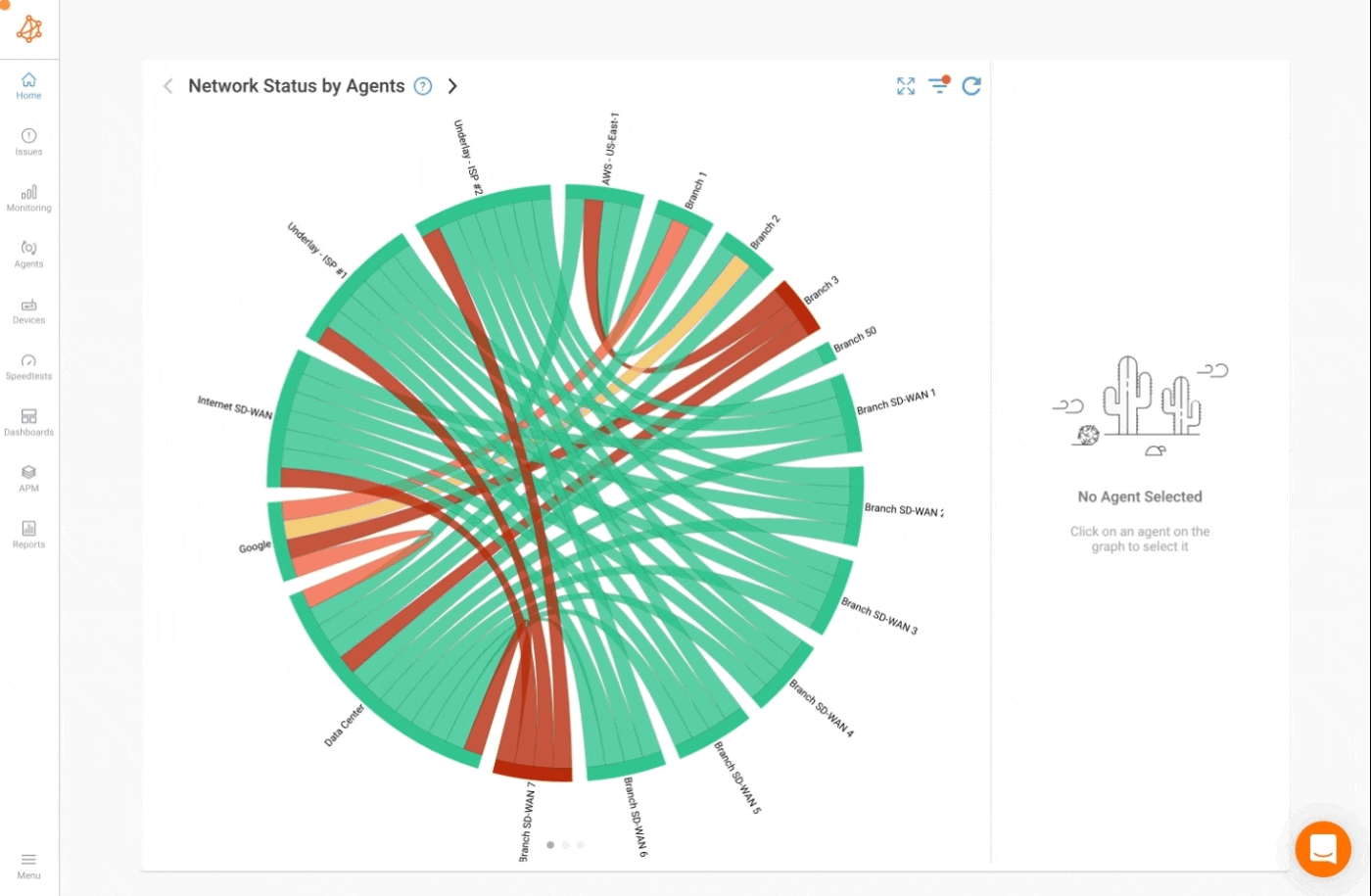
Monitoring Internet Service Level Agreements (SLAs) involves generating and analyzing various reports to assess the performance and compliance of your service provider. The types of reports you need include:
1. Performance Reports:
These reports include metrics like latency, packet loss, and bandwidth usage. They provide a clear picture of how well your Internet service is performing in comparison to the SLA's benchmarks.
2. Uptime Reports:
Uptime reports track the availability of your Internet service, indicating how often it's online and accessible. It helps you ensure that you're getting the uninterrupted service promised in your SLA.
3. Incident and Outage Reports:
These reports detail any service disruptions or incidents, including their duration and impact. They are essential for understanding the reliability and resilience of your Internet connection.
4. SLA Compliance Reports:
These reports directly compare the service provider's performance against the SLA's stipulated parameters. They help you identify breaches and hold the provider accountable.
5. Trend Analysis Reports:
Trend reports offer historical data and trends in performance, allowing you to identify recurring issues and make informed decisions regarding your Internet service.
6. Customer Experience Reports:
Collecting feedback from end-users can provide valuable insights into their experience with the Internet service, helping you address user-specific concerns.
Your Internet SLA is the contract that defines the terms of your Internet service with your provider. It's a document that outlines the performance benchmarks, guarantees, and conditions you can expect from your ISP.
However, SLAs are often written in legal or technical language that can be challenging to decipher. This chapter aims to demystify the process of reading and interpreting your ISP's Internet SLA.
- Understand Definitions: Pay attention to definitions and terminology sections. Clear definitions of terms used in the SLA can help you understand the document better.
- Look for Key Metrics: Identify the key performance metrics and guarantees, such as speed, latency, uptime, and response times. These are the heart of your SLA and should be clear and quantifiable.
- Examine Service Levels: Pay close attention to the service levels outlined in the SLA. These should specify the levels of service quality and the provider's obligations.
- Check for Exclusions and Limitations: Look for sections that detail what's not covered by the SLA and any limitations on the provider's responsibilities.
- Note Your Responsibilities: Ensure you understand any responsibilities you have as a customer, such as notifying the provider of issues.
In this section, we'll break down some common clauses and components found in Internet SLAs:
1. Internet Speed Guarantees:
This clause specifies the minimum and maximum speeds you can expect from your Internet service. It may detail different speeds for uploads and downloads.
2. Latency Commitments:
It outlines the good latency rate, or acceptable delay in data transmission. Low latency is crucial for real-time applications.
3. Uptime and Availability:
This clause defines the guaranteed availability of your Internet service, often expressed as a percentage. It should also mention any scheduled maintenance windows.
4. Response Times:
If your SLA includes customer support response times, this clause will specify how quickly the provider must respond to your inquiries or address issues.
5. Service Credits and Compensation:
This section describes the remedies in case of SLA breaches. It may include service credits or compensation for downtime.
6. Outage Definitions:
The SLA typically defines what constitutes an outage, including the criteria and duration that qualify for service credits.
7. Termination and Dispute Resolution:
It outlines the conditions under which you can terminate the agreement and the process for dispute resolution.
Understanding these common clauses and components is essential to ensure you know exactly what you're entitled to and what your ISP is obligated to provide. It empowers you to make well-informed decisions and, if necessary, to hold your service provider accountable for any SLA violations or issues related to your Internet service. In the chapters ahead, we'll continue to explore how to monitor and optimize your Internet service based on the SLA terms.
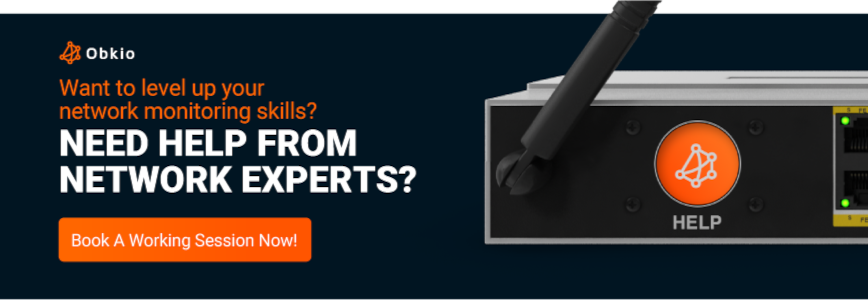
In our earlier sections, we covered the fundamentals of monitoring Internet Service Level Agreements (SLAs) using Network Monitoring tools. However, the landscape of SLA monitoring is multifaceted, and there are alternative techniques and tools that can enhance your understanding and management of your Internet service quality.
In this section, we delve into these supplementary techniques, providing you with a broader toolkit to ensure your Internet service consistently aligns with the terms and guarantees outlined in your SLA. Whether you're looking for quick insights or in-depth analysis, these additional techniques offer valuable ways to maintain the quality and reliability of your Internet connection.
As we discussed earlier in this article, network monitoring software provides a comprehensive and continuous approach to SLA monitoring. Network Monitoring tools, like Obkio, are suitable for businesses and organizations with larger and more complex networks. Network monitoring software offers a wide range of features, including:
- Real-Time Monitoring: These tools continuously track various metrics, such as latency, packet loss, bandwidth utilization, and more. They provide real-time insights into your network's performance.
- Alerts and Notifications: Network monitoring software can be configured to send alerts and notifications when performance metrics deviate from acceptable levels, allowing you to address issues promptly.
- Historical Data: They store historical data, enabling trend analysis and identification of recurring issues over time.
- Custom Dashboards: Many network monitoring tools allow you to create custom dashboards, giving you a centralized view of relevant performance metrics.
- Capacity Planning: These tools help you optimize network capacity and ensure it aligns with your SLA requirements.
Internet speed test tools are readily available online and provide a quick and simple way to assess your Internet connection's performance. These tools typically measure your download and upload speeds and display the results in megabits per second (Mbps) or gigabits per second (Gbps). Internet speed test tools are especially useful for residential users and small businesses looking for a basic assessment of their Internet performance. Some of the key points to consider include:
- Accessibility: Internet speed test tools are widely accessible and often free. You can find them on various websites and as downloadable apps for smartphones.
- Instant Results: Speed test tools offer quick results, allowing you to gauge your current connection speed in real time.
- Comparative Analysis: You can use these tools periodically to monitor changes in your Internet speed and identify any deviations from the promised speed in your SLA.
Third-party testing services offer independent and objective assessments of your Internet service. These services are often used by businesses that want an impartial evaluation of their Internet service quality. Key features of third-party testing services include:
- External Validation: These services provide an external perspective on your Internet service quality, ensuring unbiased evaluations.
- Custom Testing: Some third-party services allow you to tailor tests to specific SLA requirements, making it easier to evaluate compliance.
- Comparison with Benchmarks: They often compare your Internet service performance against industry benchmarks and standards.
- Detailed Reports: Third-party testing services typically deliver detailed reports, making it easier to understand the state of your Internet service.
For those who prefer a hands-on approach, do-it-yourself (DIY) techniques for SLA monitoring can be employed. This might include:
- Using Network Monitoring Tools: Setting up your own network monitoring tools to track critical metrics.
- Scheduled Testing: Periodically conduct tests, such as speed tests or Internet latency checks, to ensure your Internet performance aligns with the SLA.
- Manual Logs: Keeping manual logs of outages, latency issues, or other SLA-related problems to document and assess service quality.
- Comparative Analysis: Regularly compare your collected data to the metrics outlined in your SLA.
By selecting the appropriate tools and techniques for your specific needs, you can effectively monitor and assess your Internet service's performance, ensuring that it aligns with the terms and guarantees established in your Internet Service Level Agreement (SLA). These monitoring methods empower you to proactively manage your service quality and hold your provider accountable for any SLA violations.
Learn about SLA monitoring & reporting using Network Monitoring to measure network, service performance, user experience & understand if SLAs are being met.
Learn more

Monitoring your Internet Service Level Agreement (SLA) isn't just about collecting data; it's about ensuring that your Internet service consistently aligns with your expectations and the guarantees outlined in your SLA. In this section, we delve into the best practices that help you maintain a high-quality Internet experience, hold service providers accountable, and foster effective communication.
By creating a monitoring schedule, setting up alerts, and embracing a culture of continuous improvement, you'll be well-equipped to proactively manage your Internet service and achieve the performance standards set by your SLA.
Consistency is key when it comes to monitoring your Internet Service Level Agreement (SLA). Establishing a monitoring schedule ensures that you regularly track the performance of your Internet service. Here's how to create an effective monitoring schedule:
- Frequency: Determine how often you should perform tests and checks. The frequency may vary depending on your SLA's critical parameters and the nature of your Internet usage. For some, daily monitoring is essential, while others may opt for weekly or monthly checks.
- Peak Usage Times: Schedule tests during peak usage times to assess performance under real-world conditions. This is particularly important for businesses and organizations.
- Automated Tests: Consider using automated tools to conduct tests at scheduled intervals. Automation minimizes the risk of human error and ensures consistent monitoring.
- SLA Milestones: Align your monitoring schedule with the milestones defined in your SLA. This might include regular performance assessments, reporting deadlines, and the renewal date of your SLA.
To promptly address issues and deviations from your SLA's performance standards, setting up alerts and notifications is crucial.
So, in addition to creating custom dashboards, Obkio allows you to set up automatic alerts (or Smart Notifications) around Internet SLA-specific metrics that matter to you most.
They can be raised because a Network Issue is detected (such as high packet loss), when a network device is down, when there's a network outage or when there’s a big change, or even a slight change, in network performance. Automatic network monitoring alerts automate the SLA monitoring process so you know when your performance expectations aren’t being met.
Here's how to make the most of this practice:
Step 1. Define Thresholds: Determine acceptable performance thresholds for the key metrics outlined in your SLA, such as latency, bandwidth, or uptime. When metrics fall outside these thresholds, trigger an alert.
Step 2. Multi-Channel Alerts: Ensure that alerts are sent through multiple channels, such as email, SMS, or mobile apps. This redundancy ensures that you receive notifications even if one channel fails.
Step 3. Severity Levels: Categorize alerts based on their severity. Critical issues might require immediate attention, while minor deviations can be addressed during regular maintenance.
Step 4. Escalation Paths: Designate an escalation path for alerts. If issues are not resolved within a specified timeframe, ensure that they are escalated to higher levels of support or management.
Step 5. Response Plans: Develop response plans that outline the steps to be taken when an alert is triggered. This helps ensure a swift and structured response to issues.
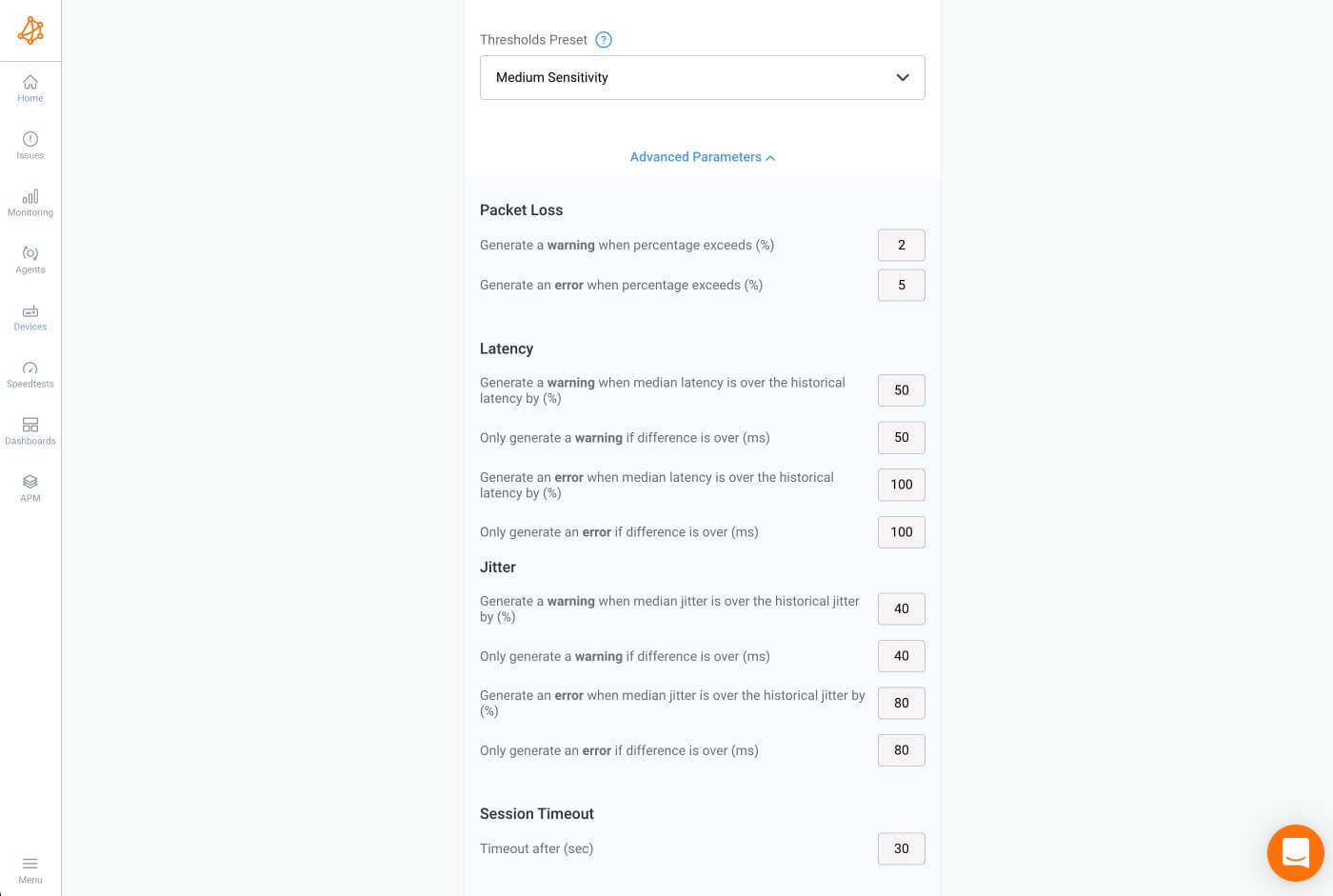
Monitoring your Internet SLA is not a one-time task; it's an ongoing process. Continuously analyze historical data to identify trends and patterns. This can help predict and mitigate potential issues before they impact service quality.
You should also provide regular reports to relevant stakeholders, including management, IT teams, and service providers. Compare your service's performance against industry benchmarks and standards to understand where you stand in relation to peers and competitors. Then periodically review your SLA to ensure it remains aligned with your evolving needs and expectations. Request amendments or updates if necessary.
Maintain open lines of communication with your service provider. Share your monitoring results, address concerns, and work collaboratively to resolve issues and improve service quality.
By adopting these best practices, you can establish a robust monitoring framework that ensures your Internet service consistently meets SLA requirements, enhances the quality of your online experience, and promotes collaboration and communication with your service provider.
If you find that your Internet Service Level Agreement (SLA) isn't being met, it's essential to take appropriate actions to ensure you receive the service quality you've been promised. Here's what to do when your Internet service falls short of the SLA's standards:
Step 1. Document the Issues:
Keep a detailed record of any performance issues, outages, or deviations from the SLA's metrics. Include dates, times, and the specific nature of the problems.
Step 2. Notify Your ISP:
Contact your Internet Service Provider (ISP) and report the issues you've experienced. Be sure to provide the documentation you've gathered.
Step 3. Request Remedies:
Consult your SLA to determine the remedies available in case of breaches or performance issues. This may include service credits, compensation, or other forms of resolution.
Step 4. Follow-Up:
If the issues persist, follow up with your ISP to ensure they are addressing the problems in a timely manner.
Internet SLA violations can take various forms, from consistent speed issues to prolonged outages. If this happens, don’t panic. Here's how to address these violations effectively:
- SLA Review: Revisit your SLA to understand the specific commitments and performance guarantees your ISP has made. This will provide a clear basis for your complaint.
- Request SLA Compliance Reports: Ask your ISP for SLA compliance reports to evaluate their performance in relation to the SLA metrics.
- Escalate to Higher Support Levels: If your initial complaints are not resolved, escalate your concerns to higher levels of support within the ISP's organization.
- Engage Regulatory Authorities: Depending on your region, there may be regulatory bodies that oversee ISP compliance with SLAs. Contact these authorities if your ISP remains unresponsive to your concerns.
Holding your ISP accountable for SLA violations is vital to ensure you receive the service quality you're paying for. Following these steps, you can work towards a resolution and compensation in case of SLA breaches and maintain a reliable Internet connection.

While Service Level Agreements (SLAs) provide a solid framework for Internet service quality, taking control of your online experience extends beyond contractual terms. In this final section, we explore ways to optimize your Internet connection and ensure its performance aligns with your expectations.
From practical tips for enhancing your connection to the enduring value of Obkio's Network Monitoring tool, this chapter offers a comprehensive guide to elevate your Internet experience. By implementing these strategies, you'll have the tools and knowledge needed to make your online journey smoother, faster, and more reliable.
While Internet Service Level Agreements (SLAs) set a baseline for your Internet service, there are several additional steps you can take to enhance your online experience. Here are some tips for optimizing your Internet connection:
- Regularly Update Your Equipment: Ensure that your modem, router, and devices are up to date with the latest firmware and hardware. This can significantly improve performance.
- Optimize Your Wi-Fi: Position your router in a central location, away from obstructions, and use a strong, unique Wi-Fi password. This will improve coverage and security.
- Manage Network Traffic: Prioritize network traffic for critical applications, such as video conferencing or online gaming, to ensure a smooth experience.
- Use Quality Cables: High-quality Ethernet cables can make a difference in your connection's stability and speed.
- Monitor Device Usage: Be mindful of the number of devices connected to your network. Disconnect unused devices to free up bandwidth.
- Consider Network Upgrades: If your Internet service plan doesn't meet your needs, consider upgrading to a higher speed plan.
- Implement Security Measures: Protect your network from unauthorized access and cyber threats by enabling security features on your router and using strong passwords.
- Use Content Delivery Networks (CDNs): CDNs can speed up the loading of web content by serving it from servers closer to your location.
- Check for Interference: Identify and eliminate sources of interference, such as other electronic devices, that may disrupt your Wi-Fi signal.
II. Keeping Obkio’s Network Monitoring Tool as a Permanent Tool for Monitoring and Optimizing Internet Performance
Obkio's Network Monitoring tool provides continuous, end-to-end monitoring of your network, helping you proactively manage and optimize your Internet performance, identify Internet problems, and ensure that your Internet is performing the way that your SLA promised.

- Continuous Monitoring: Maintain Obkio's Network Monitoring tool as a permanent fixture in your network infrastructure. This ensures ongoing visibility into your Internet performance.
- Custom Dashboards: Create custom dashboards within the tool to visualize the specific performance metrics that matter most to you. This allows for real-time monitoring of key parameters.
- Alerts and Notifications: Configure alerts within the tool to receive immediate notifications when performance metrics deviate from acceptable levels. This enables prompt issue resolution.
- Historical Data Analysis: Leverage the historical data collected by the tool for trend analysis and to identify recurring issues. This empowers you to take proactive measures to optimize your Internet service.
- Collaboration: Use the tool's data to facilitate communication and collaboration with your service provider. Share performance data, reports, and insights to ensure a mutual understanding of service quality.
- Capacity Planning: Use the tool to manage network capacity effectively. Adjust your bandwidth allocation and infrastructure based on the data collected.
- Continuous Improvement: As a permanent tool, Obkio's Network Monitoring becomes an integral part of your network management strategy, enabling continuous improvement of your Internet experience.
By incorporating Obkio's Network Monitoring tool as a permanent part of your Internet management toolkit, you gain an edge in optimizing your Internet performance and ensuring that it consistently aligns with your SLA standards. It's a valuable asset for maintaining a strong, reliable Internet connection and enhancing your online experience.
In a world where our daily lives are increasingly reliant on the Internet, the quality of our online experience is paramount. Service Level Agreements (SLAs) play a crucial role in setting the standards for Internet service quality, and monitoring them is your ticket to ensuring that your service provider delivers on their promises. This blog post has taken you on a journey through the world of Internet SLAs, empowering you with knowledge, techniques, and network monitoring best practices to monitor and optimize your online experience.
From understanding the significance of SLAs to deciphering complex clauses within the documents, you've gained insights into the essentials of SLA monitoring. You've explored the diverse metrics and categories that matter most in assessing Internet service quality, whether it's technical performance, user experience, or security.
We've shared tips for creating an effective monitoring schedule, setting up alerts for timely issue resolution, and fostering a culture of continuous improvement and communication. These practices will ensure that your Internet service consistently meets your expectations, and when it doesn't, we've equipped you to hold your ISP accountable.
But our journey doesn't stop there. Beyond SLAs, we've delved into the world of optimizing your Internet connection, offering practical advice on making your online experience faster, more reliable, and more secure. We've highlighted the enduring value of Obkio's Network Monitoring tool as a permanent fixture in your network infrastructure, providing continuous insights and helping you achieve your Internet performance goals.
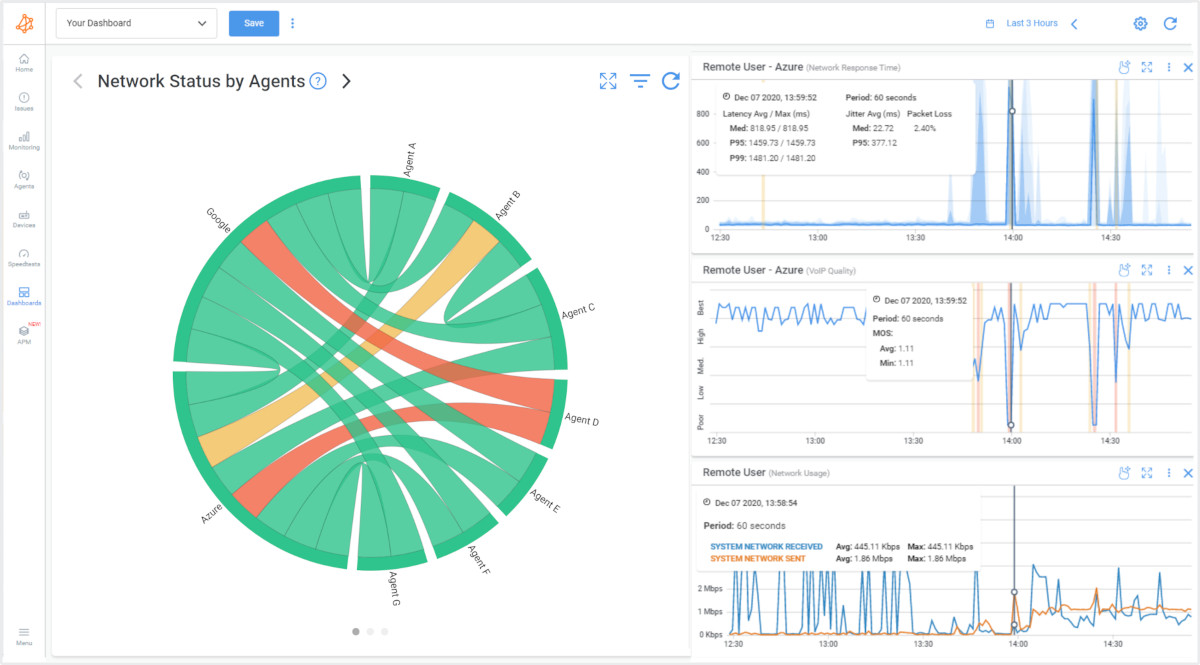
As we conclude this exploration, remember that your Internet experience is ultimately in your hands. By proactively monitoring your SLAs, optimizing your connection, and staying informed, you're well-prepared to navigate the digital landscape with confidence.
The power to enhance your online experience is yours, and Obkio is your compass.
- 14-day free trial of all premium features
- Deploy in just 10 minutes
- Monitor performance in all key network locations
- Measure real-time network metrics
- Identify and troubleshoot live network problems



























 Obkio Blog
Obkio Blog





